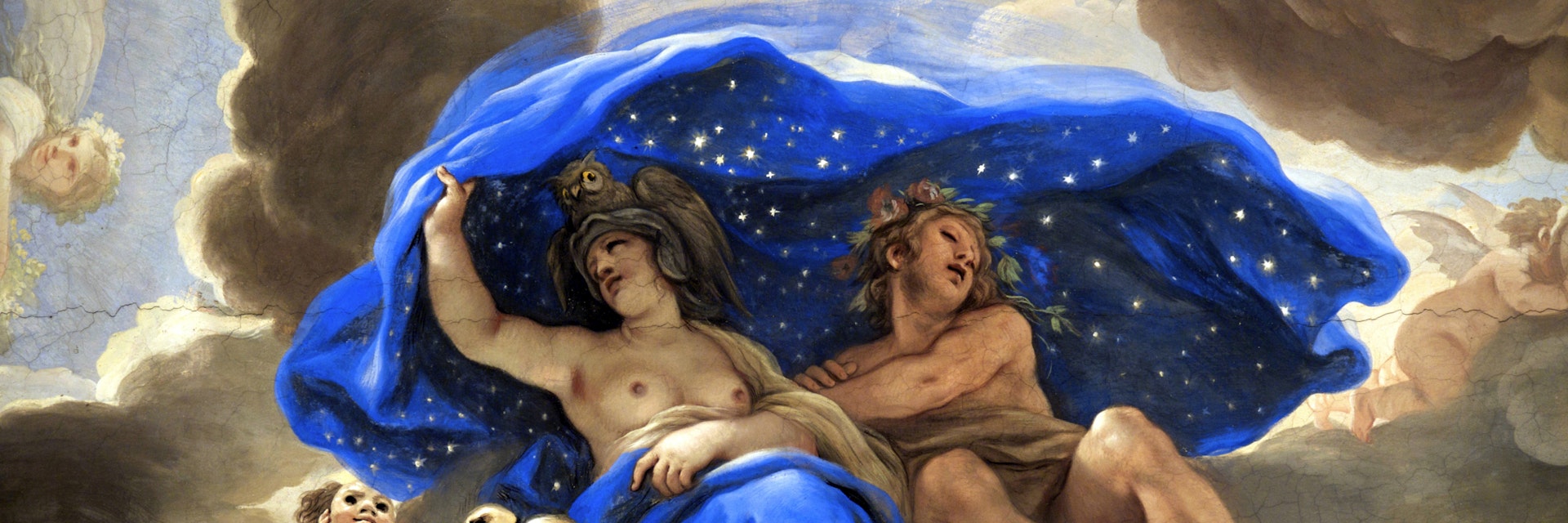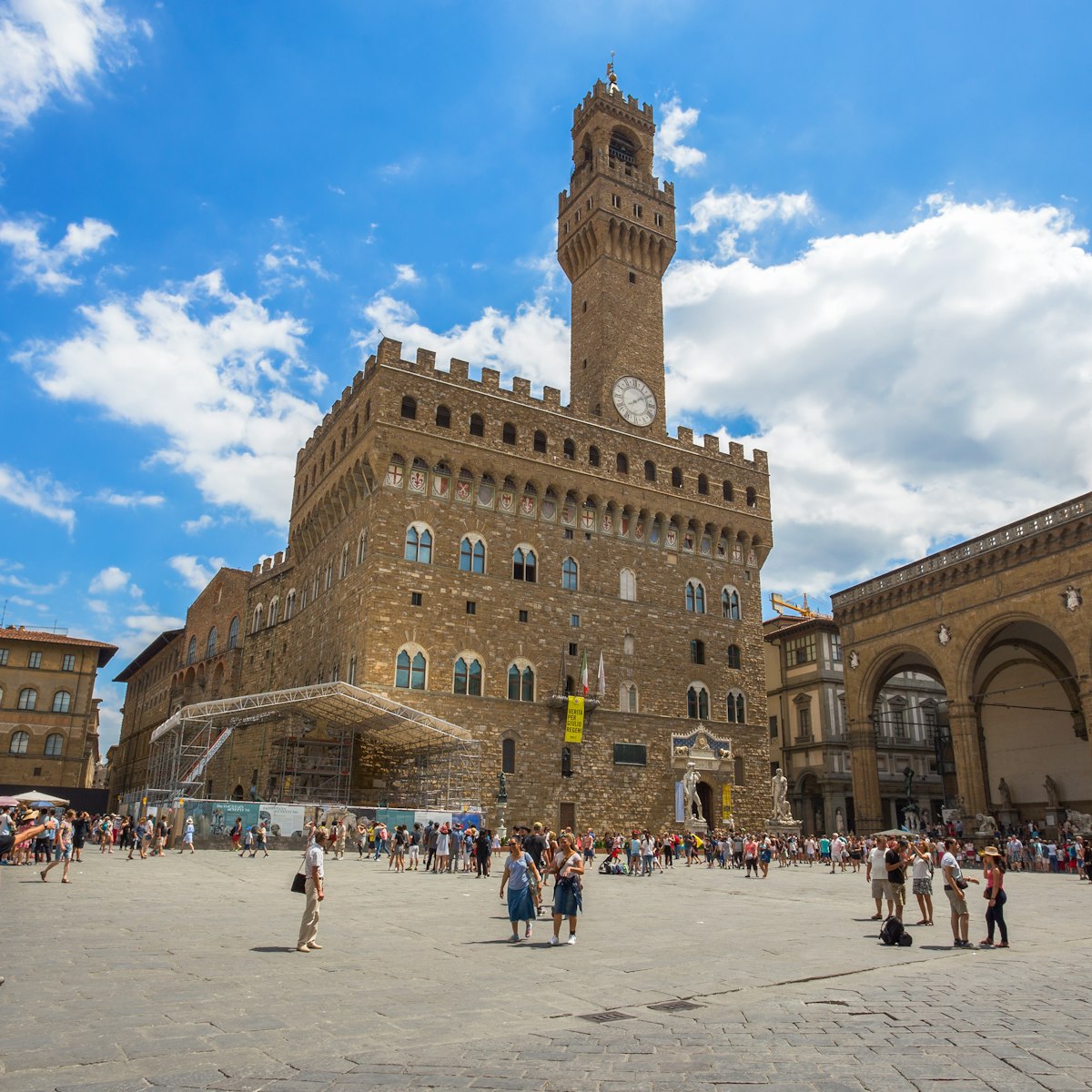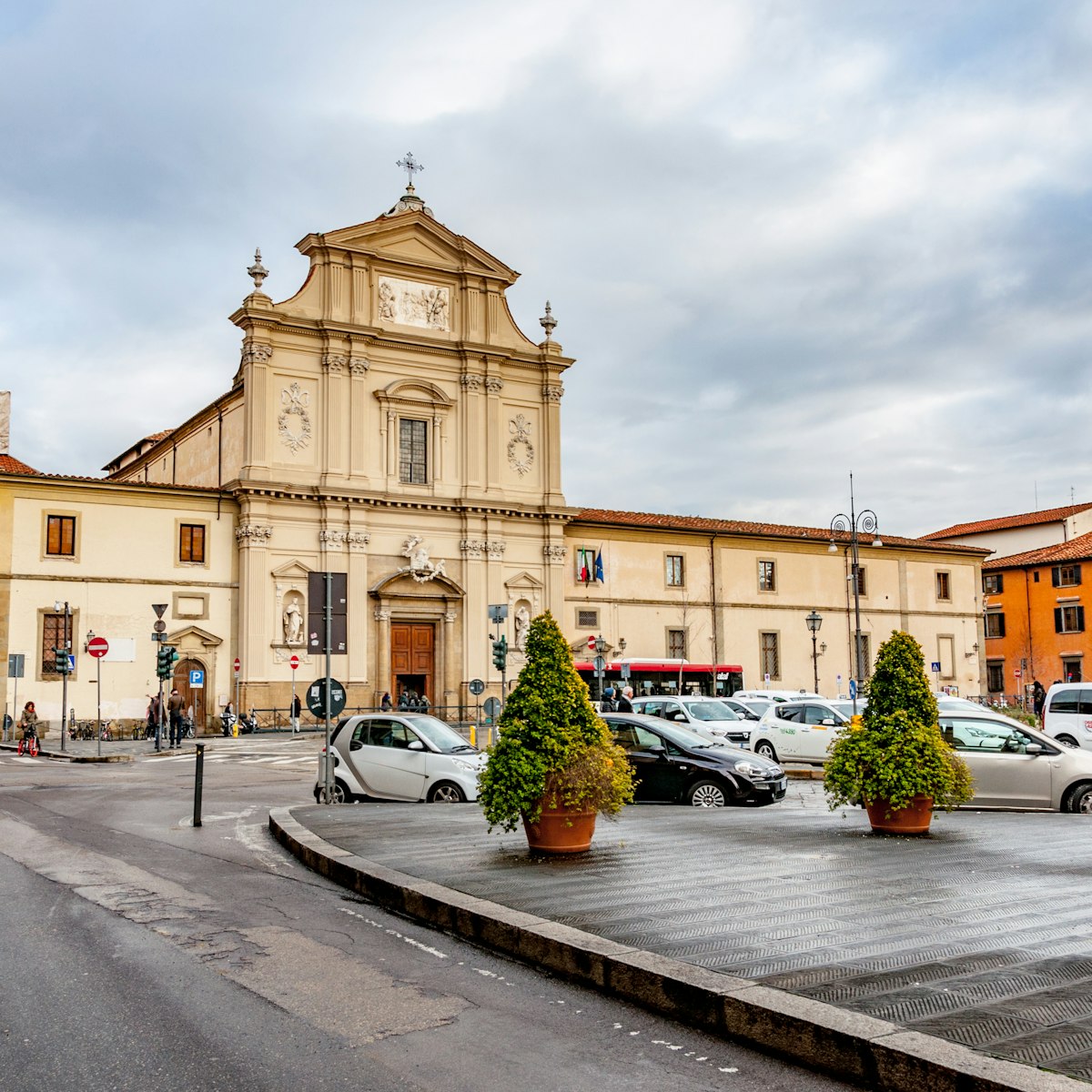Cosimo the Elder entrusted Michelozzo with the design of the family's town house in 1444. The result was this palace, a blueprint that influenced the construction of Florentine family residences such as Palazzo Pitti and Palazzo Strozzi. The upstairs chapel, Cappella dei Magi, is covered in wonderfully detailed frescoes (c 1459–63) by Benozzo Gozzoli, a pupil of Fra' Angelico, and is one of the supreme achievements of Renaissance painting.
Gozzoli's ostensible theme of Procession of the Magi to Bethlehem is but a slender pretext for portraying members of the Medici clan in their best light; spot Lorenzo Il Magnifico and Cosimo the Elder in the crowd. The chapel was reconfigured to accommodate a baroque staircase, hence the oddly split fresco. The mid-15th-century altarpiece of the Adoration of the Child is a copy of the original (initially here) by Fra' Filippo Lippi. Only 10 visitors are allowed in at a time; in high season reserve in advance at the ticket desk.
The Medici lived at Palazzo Medici until 1540, while the Riccardi family moved in a century later. They remodelled the palace and built the 1st-floor Sala Luca Giordano, a sumptuous masterpiece of baroque art. Giordano adorned the ceiling with his complex Allegory of Divine Wisdom (1685), a rather overblown example of late baroque dripping with gold leaf and bursting with colour.
Take time to mooch around the palace's peaceful courtyard garden, created in the 15th century as a green sanctuary for the Medici, with its exquisite boxwood hedges, fragrant plants and elegant sculptures, including Donatello's bronze Judith and Holofernes (1455–60), subsequently moved to Palazzo Vecchio. A couple of lesser-known sculptures remain today, atmospherically wedged between potted lemon trees.








